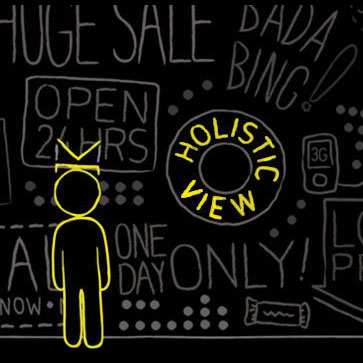Fraud Alert! 3 Tips to Help Marketers Ditch Fraudsters

Fraud is a four-letter word in the advertising industry.
It sucks money out of campaigns and brands' bottom lines. While the famed industry impact estimate of $6 billion is likely overstated to a degree, the true figure is certainly large enough to warrant further discussion. There should already be automated checks and protections built into ad serving technology, that goes without saying. There are a few other things, however, that marketers can keep in mind to help secure their ad dollars from the getting into the wrong hands.
Below are three tips that marketers should keep in mind to help prevent ad fraud:
1. comScore Site presence is an indicator of legitimacy
Though comScore data is not perfect, it is directionally correct and consistent since every publisher is held to the same data set. One of the biggest indicators of fraud is if a person enters a site domain into comScore and it doesn't even show up or it shows no data.
Companies should not work with these kinds of sites. Does this mean there are plenty of legitimate smaller sites out there that haven't reached a large enough size to begin registering statistically significant data on comScore? Sure, but marketers should consider this a risky zone to operate in, and stay away.
When marketers attempt to turn away a new prospective publisher (especially one that is up to no good), they will often push back with a list of excuses. One common one is that the publisher isn't showing any data in comScore because they haven't registered with comScore or placed their pixels to become "unified." Note that pixel placement is not a requirement to show up in comScore. Don't let that common misconception force you into making a poor decision.
comScore, Alexa, or Compete - take a pick. The key is to pick one tool/platform, learn it and stick with it.
2. Watch out! Red flags in traffic patterns
Beyond requiring the site to display at least some data in comScore, Web professionals need to look for two things: the site to have been in existence for at least a year, and for the site to have a stable traffic pattern during this time (or at least a reasonable rate of growth). For example, looking across some of the exchanges, marketers will find loads and loads of sites that show a comScore graph that looks like a big check mark with a high traffic spike after a short period of time.
Trust me, nobody wants to work with these sites either.
Does avoiding these sites mean a company might be missing out on ones that have shown legitimate, explosive growth over a short period of time? Sure, but again, this is a zone that is just too risky.There can only be so many Buzzfeeds that show this kind of overnight success; the vast majority of sites out there take time to grow. They start small and climb their way up over time.
Other questionable traffic pattern variations include large spikes coupled with large drops in traffic.
What exactly is happening here? Nothing good. In many cases, the publisher is purchasing traffic in some way to boost their traffic numbers. This may be explicitly understood by the publisher, such as if they are working with a provider that promises cheap traffic. Even a simple Google search for "buy site traffic" yields over 149 million results. Clearly there is a market for these services.
This "purchased traffic" may actually come from something seemingly more harmless, such as the publisher working with a firm promising to do SEM or Social Marketing on the publisher's behalf. The problem is that the risk isn't limited just to this third party. Third parties often work with other third parties, who work with third parties themselves, and that's where things can get tricky.
Ultimately, organic traffic should make up the majority of the traffic, and testing should be small and ongoing. Some sites are taking shortcuts.
3. Third-party verification companies: an extra step for protection, not the be-all, end-all
"Why not work with a third-party verification company to weed this stuff out?" Well, while these firms catch some of the fraud out there, they miss a good bit as well. Adding the methodologies discussed to a site acceptance criteria will catch many of these missed instances and further safeguard inventory portfolio.
It's important to note that such a conservative, cautious methodology may unintentionally weed out some legitimate sites that may have perfectly valid reasons to show shifty traffic patterns. But with the prevalence of fraud out there today, you can't be too safe. If the other networks/SSPs/exchanges implement the same criteria, they'll not only see their verification vendor scores improve, but they'll improve the overall quality and safety of placements for their advertisers.
Maybe with all of us working together, we'll start to push some of these fraudsters out for good. Stay alert and be careful out there.
Rick Abell, is the vice president, global publisher development at Exponential a global provider of advertising intelligence and digital media solutions to brand advertisers.








